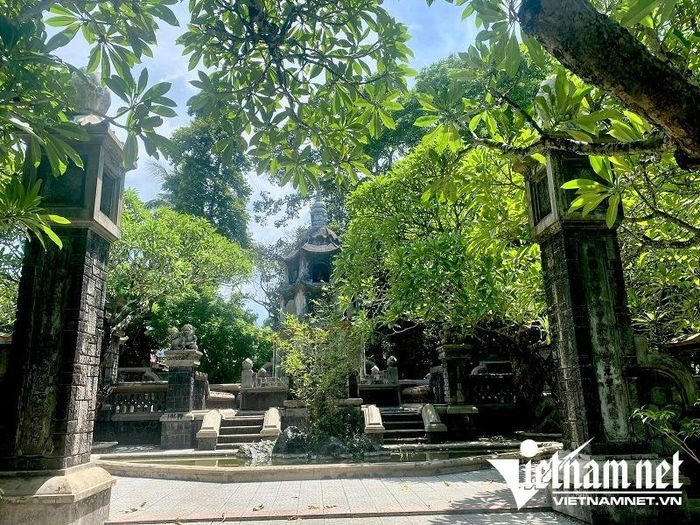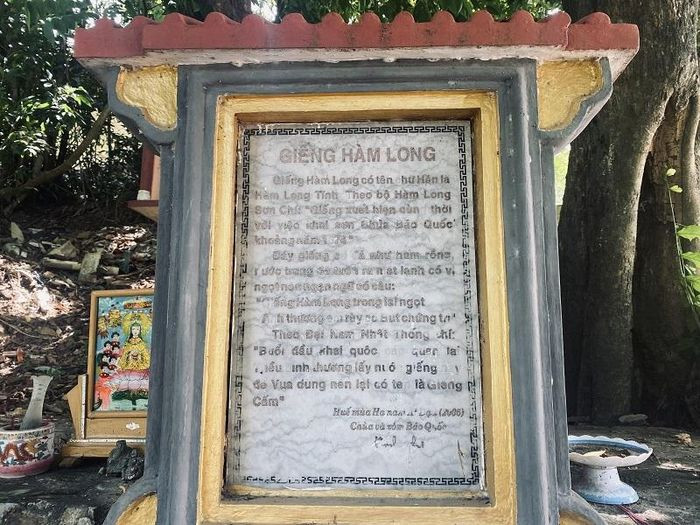Under Emperor Le Du Tong's reign (late 17th century), the pagoda was founded and named Ham Long Tu by Most Venerable Thich Giac Phong.
In 1747, Lord Nguyen Phuc Khoat gave the pagoda a gold plaque with the name "Sac Tu Bao Quoc Tu" which still can be found in the pagoda today.
In 1808, Emperor Gia Long renovated the pagoda, constructed the triple gate and cast a bell called Dai Hong Chung (weight: 826kg, height: 1,4m, diameter: 1,2m) to pay tribute to his mother - Empress Hieu Khuong Hoang.
At first, the pagoda was named Thien Tho Tu by Emperor Gia Long. Later, Emperor Minh Mang had the pagoda renamed because Gia Long tomb was also called Thien Tho tomb.
The pagoda was renovated by Emperor Minh Mang in 1824 and Emperor Tu Duc in 1858. The Giac Phong tower was built and the tomb tower of successors such as Pho Tinh, Vien Giac and Dieu Giac.
In 1948, the Annam Buddhist Shangha moved Son Mon Buddist Center from Linh Quang pagoda to Bao Quoc pagoda. Most Venerable Thich Tinh Khiet became the Sangha General Supervisor. Bao Quoc pagoda became a center for training talented monks.
This pagoda has a campus area of about two hectares. The outermost is the massive Tam Quan gate with a few dozen high stairs that still preserve the time stamp. It has mossy features that have existed for a long time.
Inside, behind the Tam Quan (Three-Door) gate, visitors will see a large courtyard with many shady green trees. It creates a tranquil space for the pagoda, and at the end of the yard is the main hall area. The space in the middle is an airy bonsai garden.
The main hall area of the pagoda was built in the same architectural style as the traditional architecture of Vietnam. With three compartments and two lean-tos, it is very elaborate with special decorations. The pillars and walls are all patterned with pieces of crockery or majestic dragon motifs.
Inside the main hall is the solemn worship area. The Buddha statues worshiped in the main hall look dignified in glass frames. The highest court in the middle worships the statue of Buddha Tam The and two Bodhisattvas Ksitigarbha. On the next altar is the statue of Buddha Shakyamuni, and two saints, A Nan and Ca Diep. The altar on both sides worships statues of Medicine Buddha and Guan Yin Bodhisattva.
On the left of the pagoda’s yard is the ancestor tower area, and the tower of Zen Master Giac Phong, the ancestor of the Bao Quoc pagoda. The tower was built in 1714 and is 3.30m high.
In addition, on the premises of the Bao Quoc pagoda, there is a statue of Guan Yin Bodhisattva. Surrounding the pagoda are perennial green trees with wide foliage, so it is very cool and quiet.
At Bao Quoc Hue pagoda, visitors will hear the story of Ham Long well with many interesting details. In the north of the temple at the foot of Ham Long hill is a well that has existed from the time of the founding of the mountain around 1674.
The well is famous for its clear, sweet, and pure water. The depth is about 5 to 6 meters, and at the well, there was a geyser that spewed out like a water cannon, so it is called the Ham Long well.
Later on, Ham Long well water was used to offer to the Lords, and no one was allowed to use it. So, the Ham Long well became a forbidden well, a sacred well in the legend.
Through many ups and downs of time, Bao Quoc Pagoda has become a sacred and noble spiritual place. Not only a tranquil and peaceful place for souls toward the Buddha realm, but also a place of solemn worship. Bao Quoc Pagoda is a crucial Buddhist training center in Hue as well.
Some pictures of the pagoda:








The Ham Long ancient well.


Quang Thanh